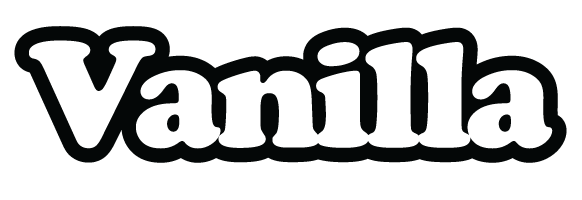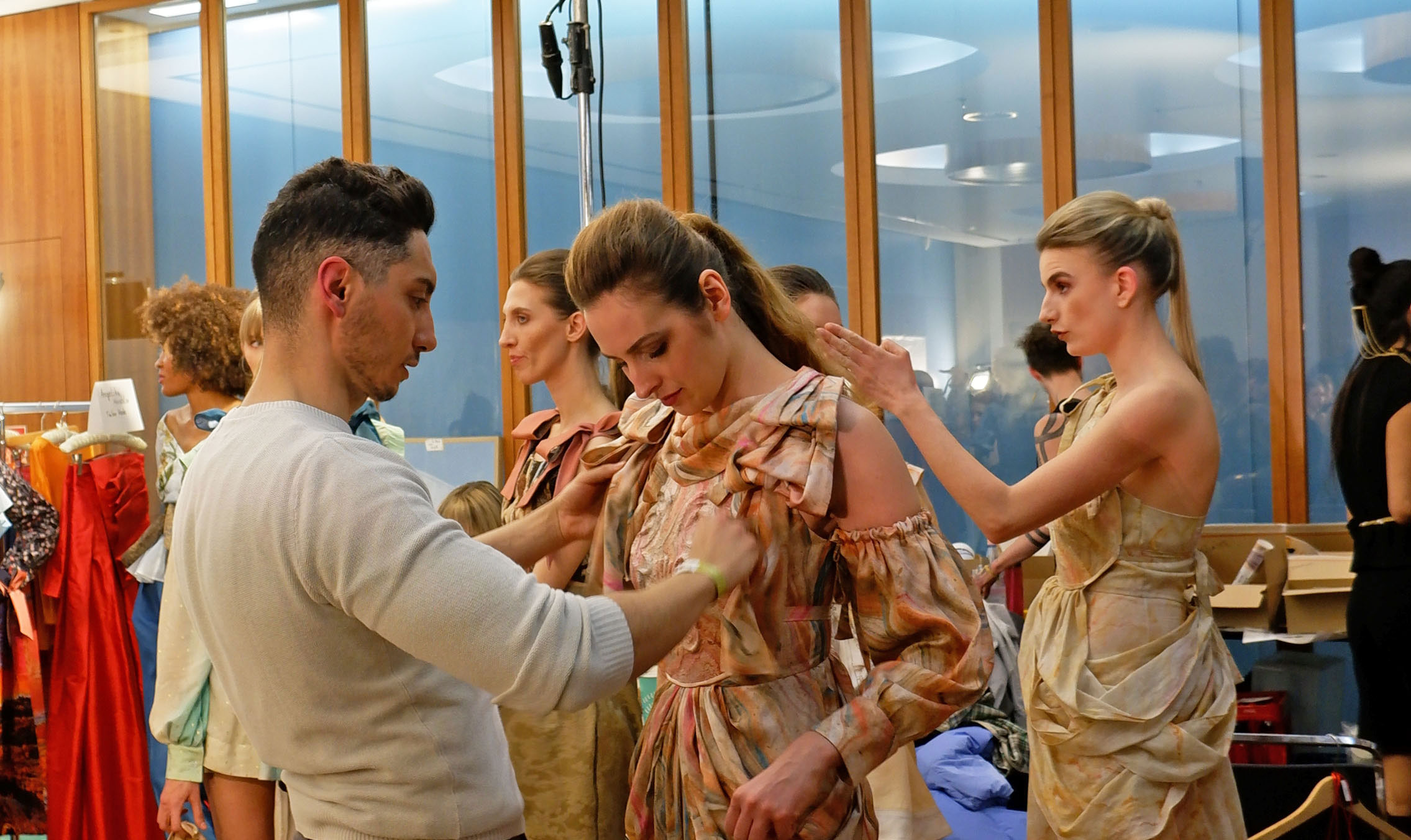Emilio Bonadio is an exciting up-and-coming designer making his mark in Europe. Graduating with degrees in fashion from both Sao Paulo’s Faculdade Santa Marcelina and Milan’s Nuova Accademia di Belle Arti, Emilio presents an exciting view into the future of fashion. His work explores the intersections of sustainability, art, and culture using architectural silhouettes and self-designed textiles. Read on to learn more about his work, and where he sees himself going next.
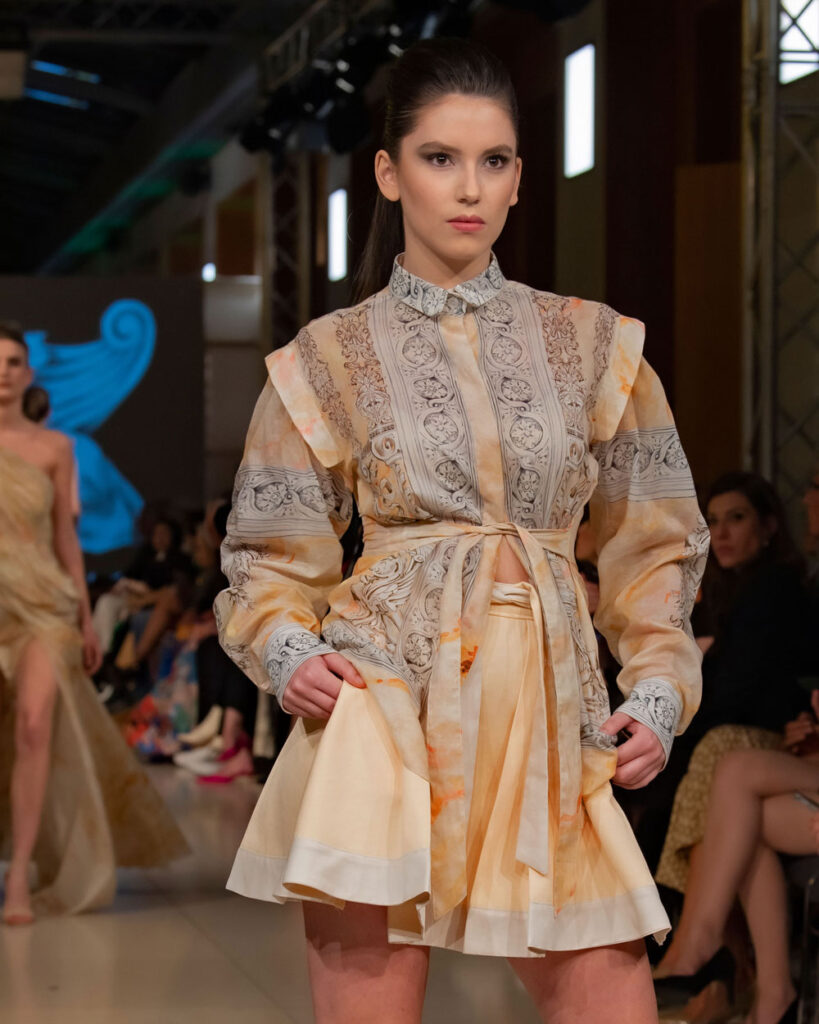
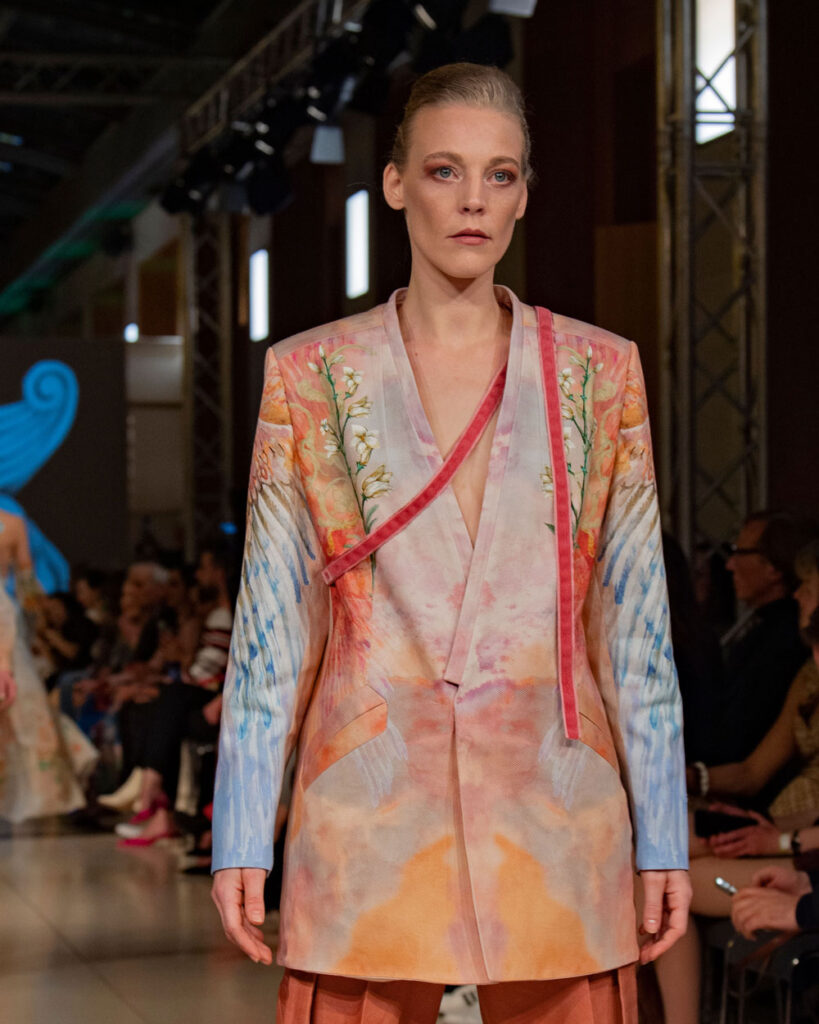
You’re originally from Brazil and travelled to Italy to pursue fashion, what was it like to study abroad and launch your career far away from home?
I’m both Italian and Brazilian. I grew up in Brazil, but my grandparents are from Veneto. My first job as a fashion designer was here in Italy, after winning a contest during my bachelor’s degree, an Italian company offered me an internship as a prize. A couple years later I decided it was the right time to go back to university because I felt it was necessary to have a master’s degree, and I have chosen Milan naturally.
I think in the beginning I found so many doors closed, the market is very competitive in Italy, the level of fashion education is high. Besides talent, there are some details that can make all the difference to help you like fluency in Italian, having a confident attitude, and not to be afraid to express yourself through your designs.
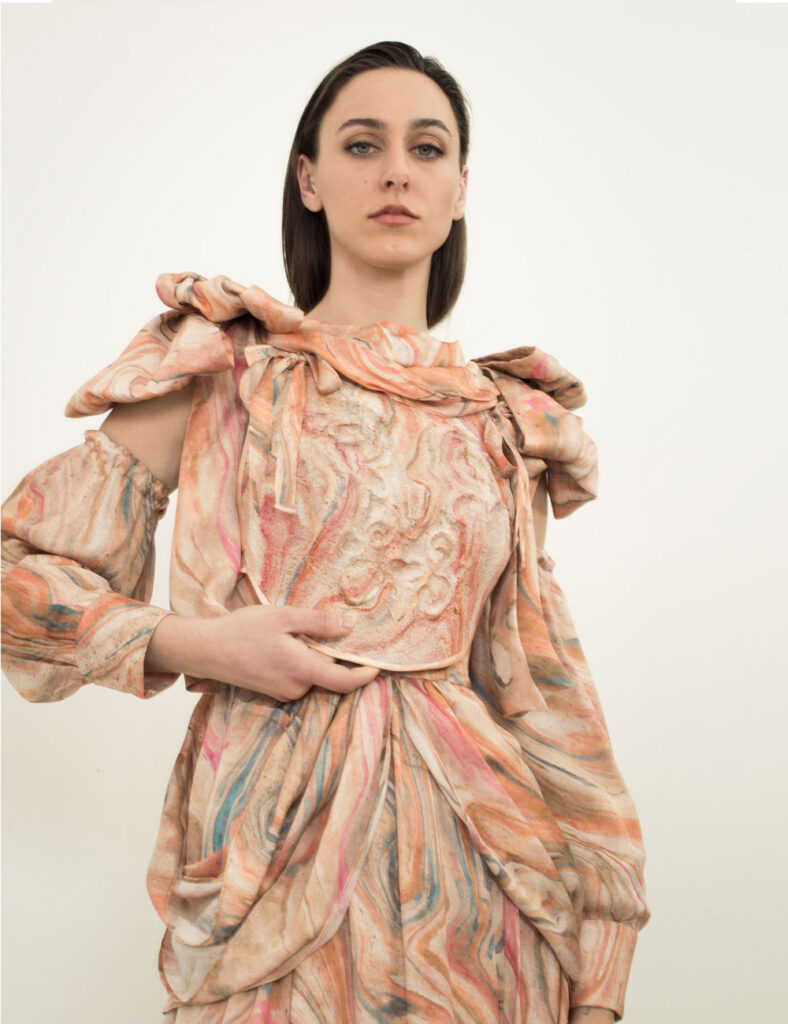
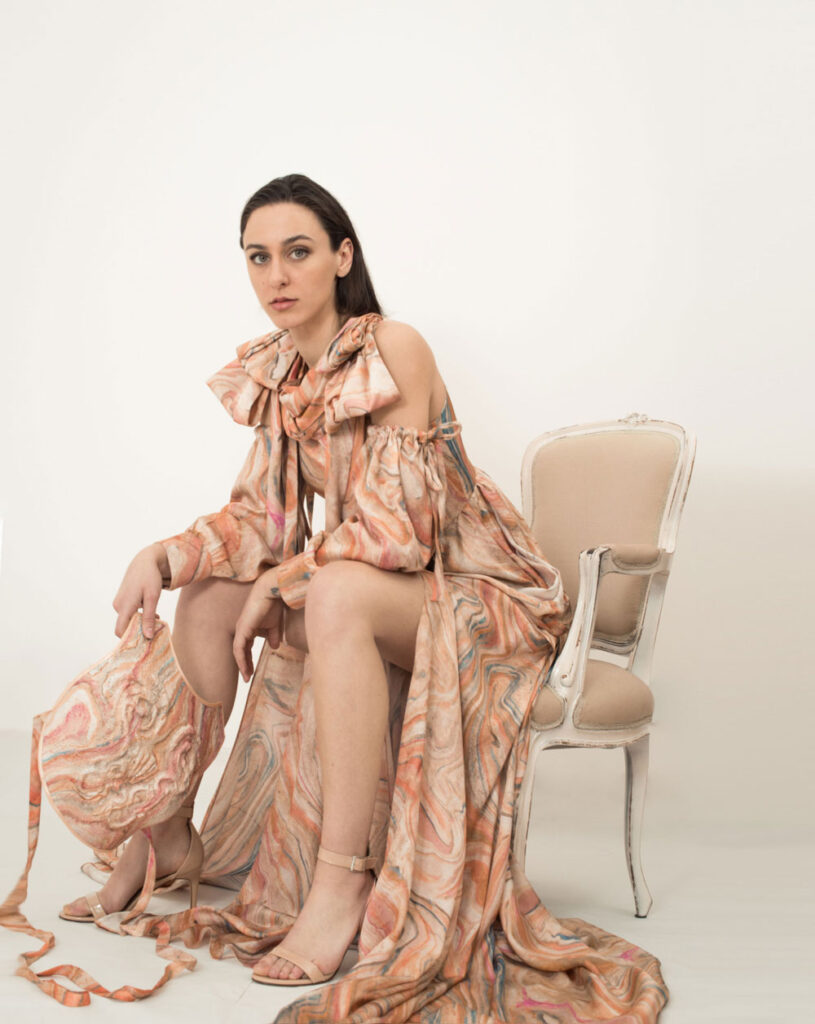
As a designer, how do you use art to inspire your creativity?
Art is in everything I do, I have a deep interest in classical art history, it’s the starting point of my research and I like to think that creating my own interpretation of a specific art style, movement or period can make me also a part of that. In the same way is something that happens naturally, I can be either in a museum, or reading a book, and somehow, I feel spontaneously connected to a painting or sculpture, and then I know that if I start to research about it, I’ll find the connection point to contextualise it in a collection theme made for present days.
Art is also in the making of my collections, I believe in doing things manually, by designing my own prints, creating 3D garments or embroidering I am performing different types of artistic expression. This makes my creations inspired by art and made of art.
How has the pandemic influenced your work?
In its first period I have just won the 2019 edition of Italian Fashion Talent Awards and had my own capsule collection in collaboration with them ready to be presented, but then we got stuck in between several lockdowns here in Italy. During those months I’ve got an opportunity also to rethink my current collection and improve its silhouettes and embroideries. After that I decided to abandon the concept of seasons and started to work by projects and themes thinking more conceptually about garments that can survive more than just one year or a trend wave.
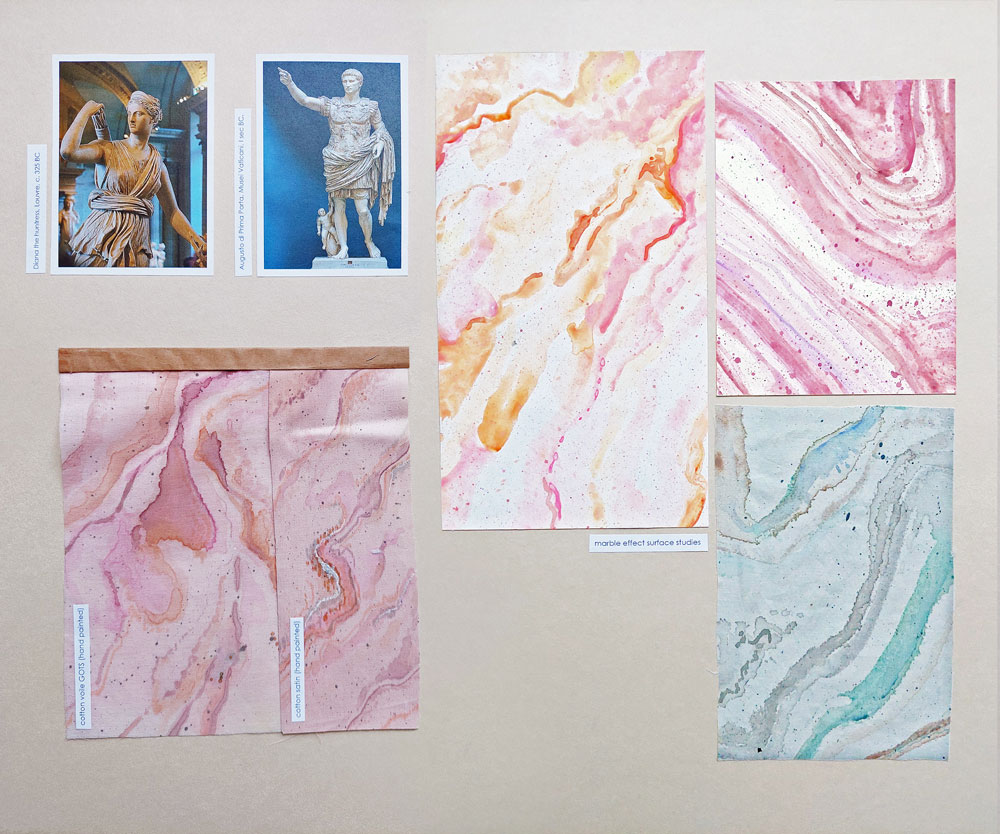
Your recent collection incorporates a beautiful print reminiscent of renaissance paintings. What inspired these prints and how did they inform the design?
This happened in one of those moments I was talking about before, I was at the Uffizi Gallery and I saw this stairway made of marble in a stone wall room, I touched the walls and knew I wanted those mineral patterns in my upcoming collection, moments later I was in the museum hall surrounded by Roman statues and went through rooms with the great master’s paintings like Botticelli or Michelangelo, and I started having these ideas about the new prints. I wanted people to feel like they were at the Uffizi, not just walking in the corridors, but inside the paintings, living in the renaissance, or trying the beautiful peplos from the sculptures. I’ve reinterpreted all those masterpieces designing graphics by hand, so when you try one of my printed jackets you could become the angel of “The Annunciation”, or even feel like you are the goddess Athena herself in one of the marble print long dresses
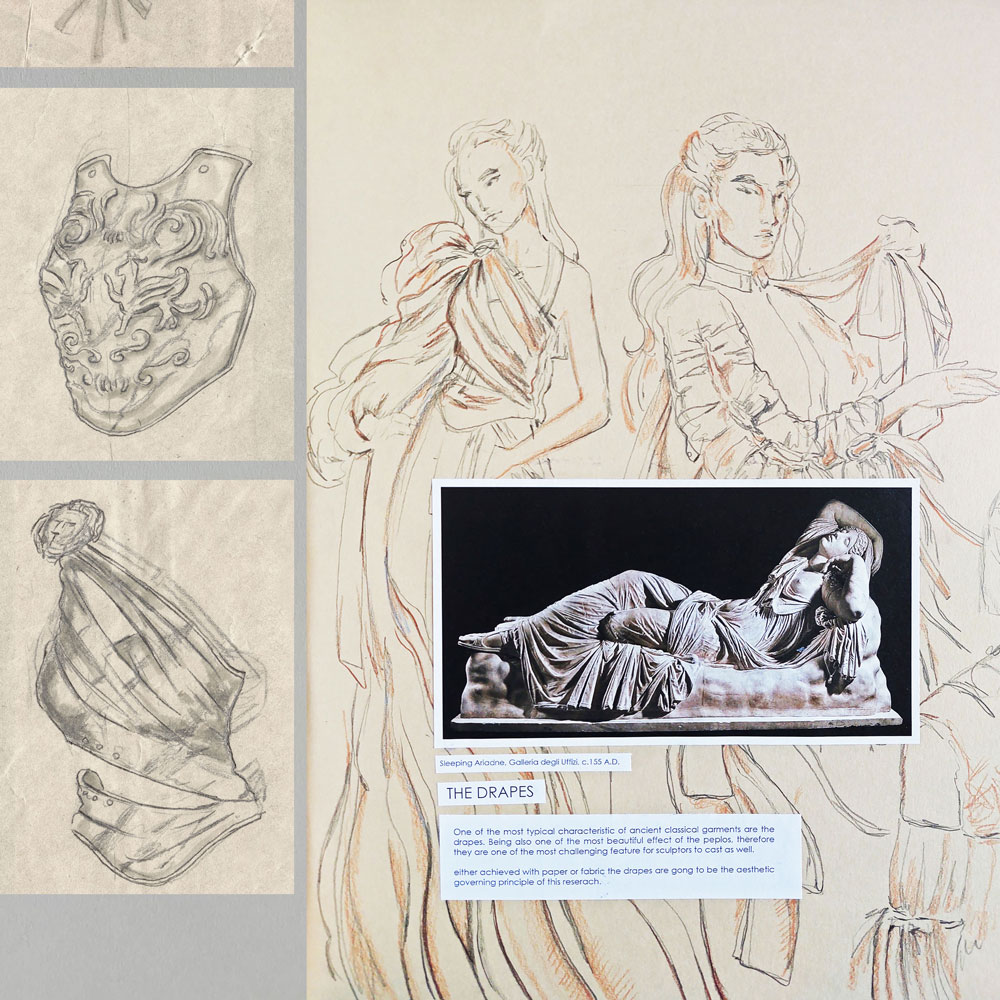
Your work has an overarching sculptural element in its design, what is the creative process like in creating your pieces? Is there any piece that was your favourite to create?
I can say it is one of the most amusing moments of my creative process because it is always something unexpected and you learn so much about materials and techniques that can be either innovative or traditionally from the 17th century for example, it is all about trying. My interest in these 3D sculptural pieces started when I was at the University and I discovered the product design lab, in that space I realised there was a whole new world of infinite possibilities. I can assure you that my favourite piece to create is always “the next one”. It is all about the thrill of challenging yourself to do things you’ve never done before.
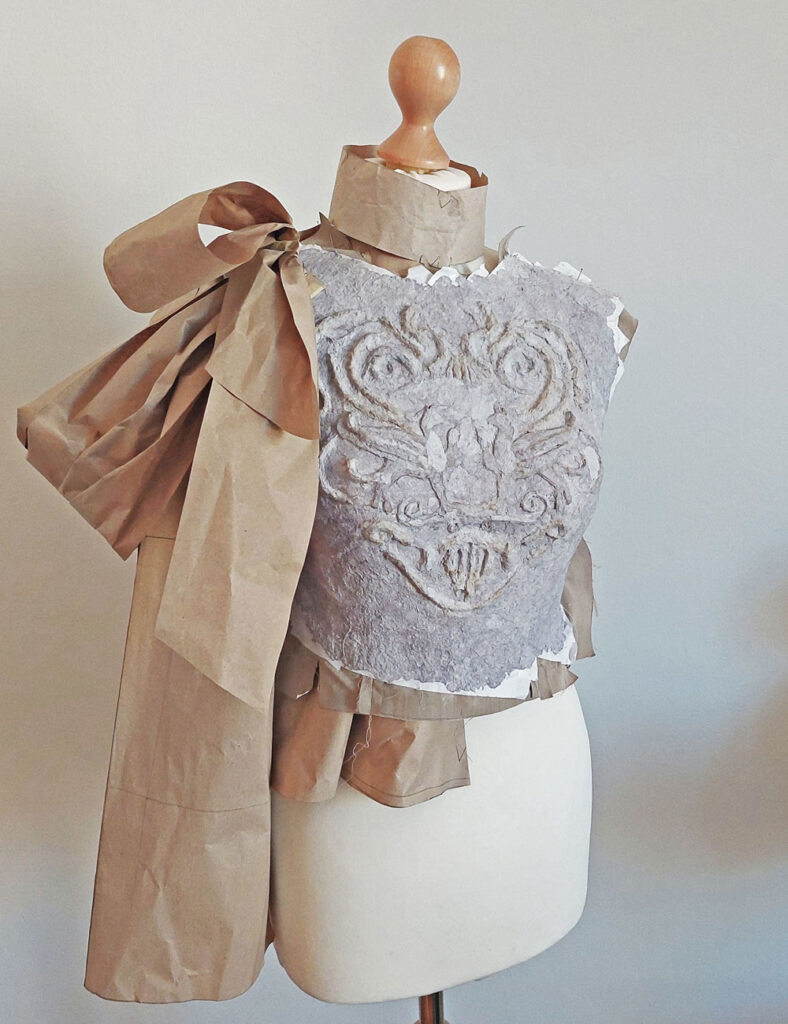
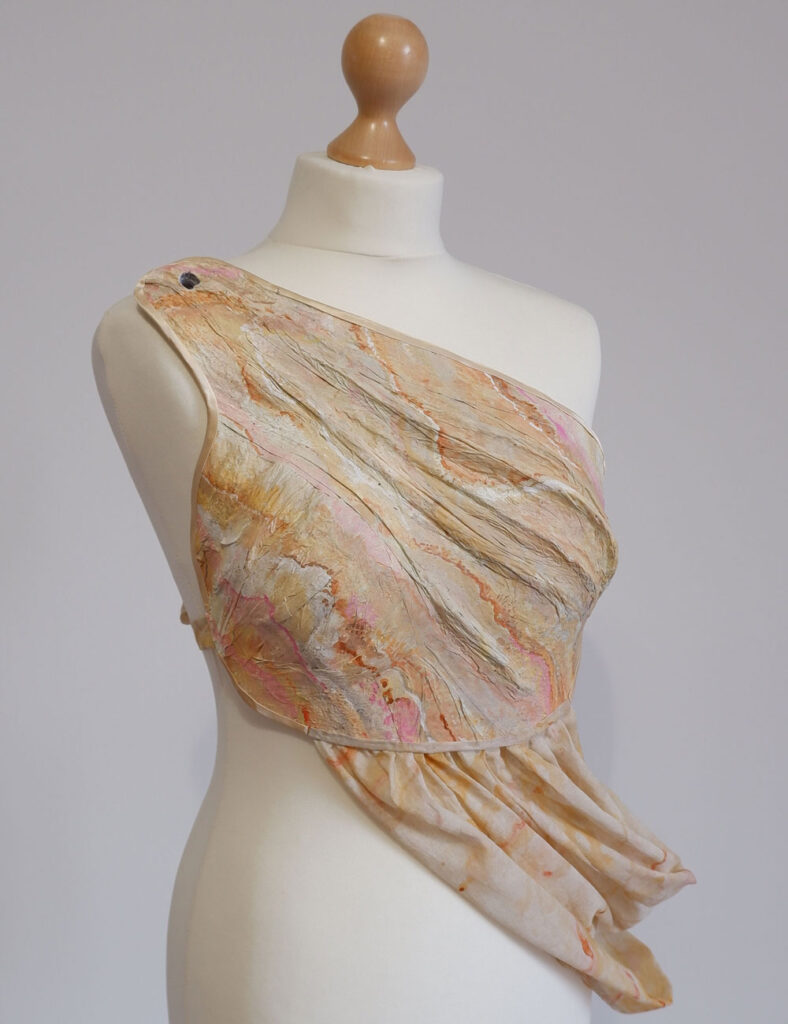
What was the process of using papier mache in your collection like? How did you arrive at your final pieces?
It all started when I wanted to convey the sensation of sculpted marble in some of my dresses. I had great results in the past with the use of plastic, but recently I’ve decided to avoid this material. I began then to research other possibilities and techniques and I found the “Vetenian Cartapesta” originally used for baroque carnival masks. After some trials I also decided to take advantage of the unfinished technique in which I could leave the surface rough to look even more like a stone. The result had an amazing effect on the runway, people always try to guess what those pieces would be made of, and usually get shocked when they find out it is actually recycled paper.
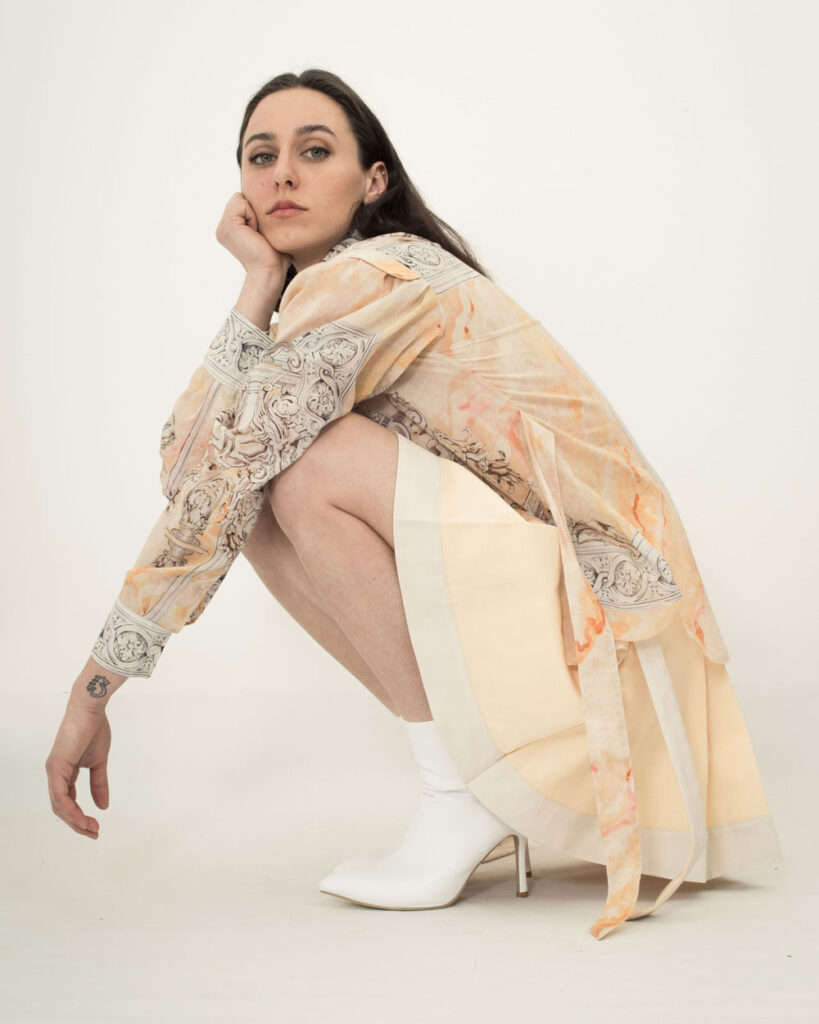
Through your own practice and creativity, do you see yourself as a designer or an artist?
After many years working for other designers and companies I’ve learned to not contaminate my personal creations with market necessities, so I’ve become a designer for others and an artist for myself. When I create my garments, it is all about having a vision and inventing this dream of a world that exists only in a fantasy.
How does sustainability inform your work and what does the word “sustainability” mean to you?
For me, thinking, producing, and consuming from a sustainable point of view is the only way to be relevant in the fashion scenario from now on. This is another aspect about my productive process I’ve developed while working for fashion companies, I can’t tolerate the amount of waste involved in the textile industry. According to my experience the key to avoid overproduction is to plan things very well and be realistic about your quality standards expectations. I rarely throw materials away, the leftovers of one project will certainly become the toiles of the next one. Towards that, the material choice is fundamental, for example, we need to reduce our polyester and oil base demand also because of the microplastics spreading in the environment.
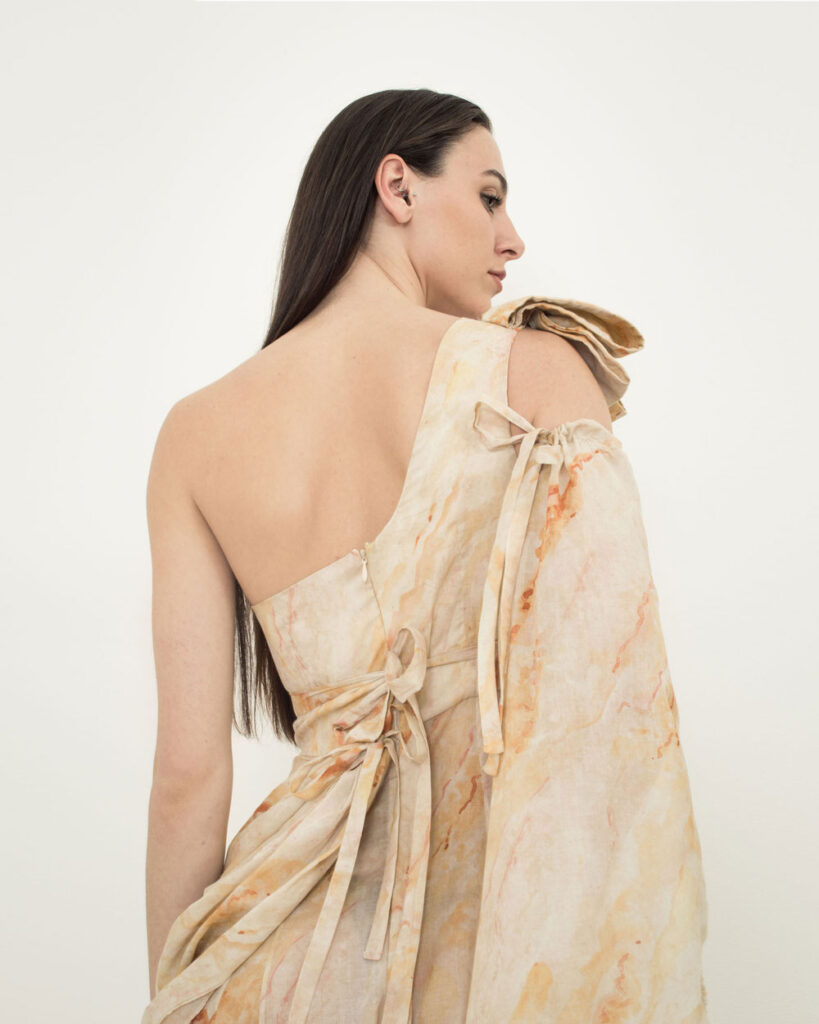
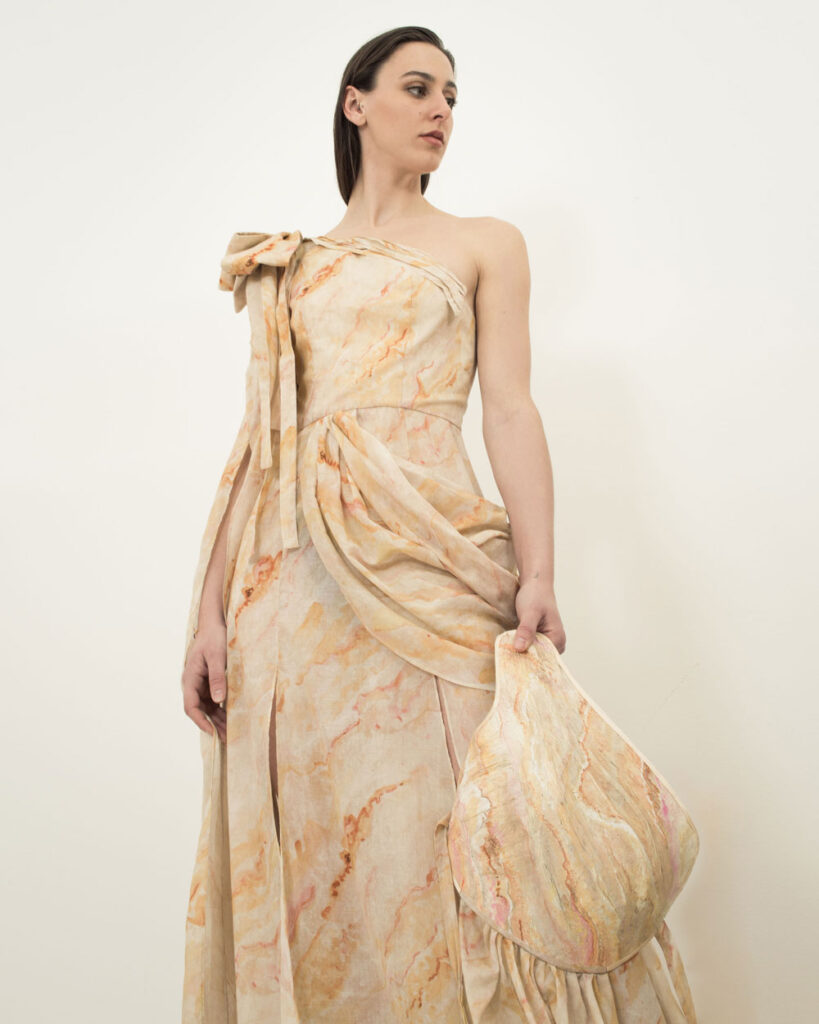
You describe your textiles as “vegan”, how do you ensure that your materials are vegan and how does that inform what garments you create?
The key to ensure that not only my textile, but all the components involved are vegan is the knowledge, studying, updating, and sometimes doubting of your suppliers, they are not worried about this as you are, so if you know what vegan means you know best. There’s no such a thing as 99% vegan, it is something that you are, or you are not. It means fibres, trimmings, threads and finishings must not use any kind of animal base component. It is more than just not eating meat, or consuming leather, it is a mentality that refuses any kind of slavery, speciesism, and cruelty.
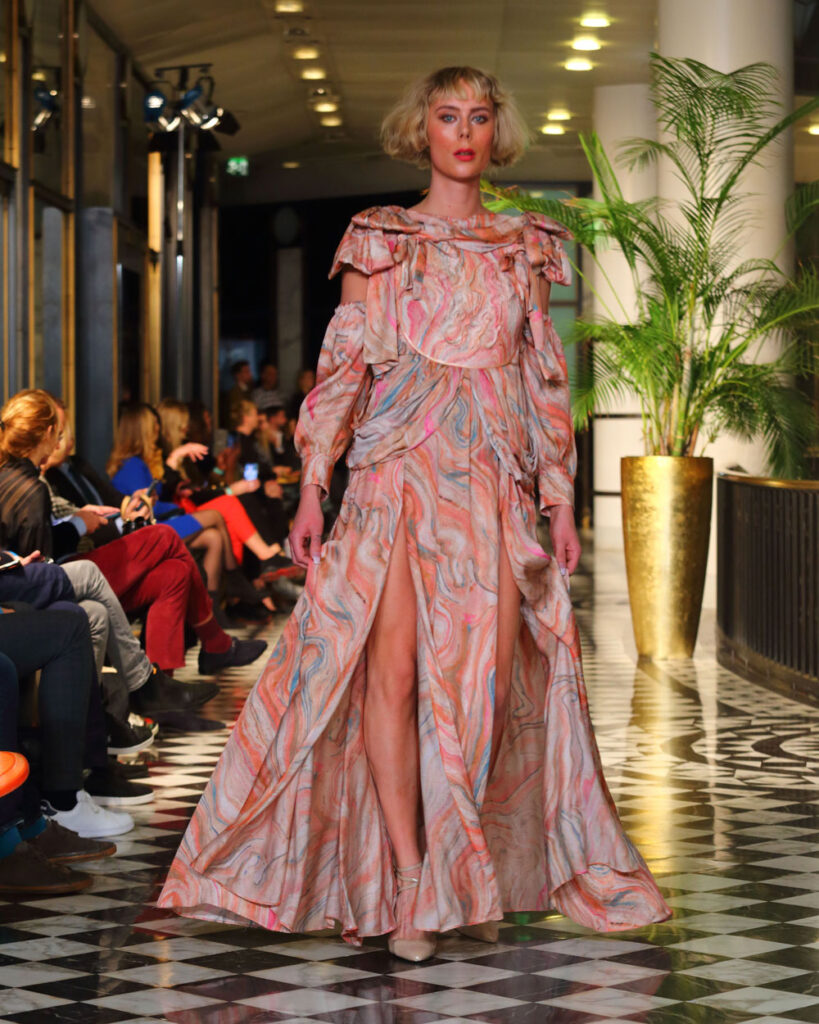
Where do you see your work in the global fashion space?
Whenever I reflect about this kind of questions, I am happy to perceive that fashion is becoming more plural each day, I know I want to do less as quantity and more as quality, so in this context I see my work relevant for special occasions, collaborations with other artists of audio-visual arts, music, and couture collectors.
Where would you like to take your work next? I would like to have my own first solo exhibition, I think it is necessary because of my field of research being classical art, sometimes my pieces can be too easy to like and look superficial to those who can’t understand them. I want to showcase my creations in an artistic environment where I can explain the complexity of them, the story behind and the political messages I would like to transmit. I want people to know that if I propose an Egyptian style top, I’m talking about women in ancient Egypt having the same civil rights as men and the Egyptian revival style emerging every time women were fighting for their rights in the 20th century, or even now, with my renaissance collection I want to trace a parallel between past and future to talk about the necessity for us humans to dedicate us to science and arts after a pandemic crisis to create a more evolved society.
To see more, visit Emilio’s instagram page here

